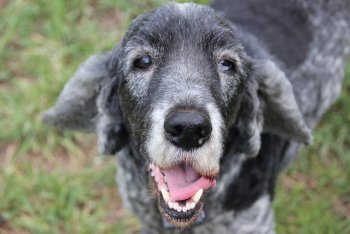Symptoms of Liver Problems in Dogs - What to Watch For
The symptoms of liver problems in dogs can be subtle at first. The signs get more pronounced as liver damage progresses. An early diagnosis is always best where possible, and learning the symptoms of canine liver disease can help you catch it early. This page contains a description of the symptoms that alerted me that something was wrong with my dog. It also offers links to useful websites where you can go for further reading. I hope it helps a little.
DISCLAIMER: I'm not a vet and I have no veterinary or medical background whatsoever. This information on liver disease in dogs is not meant as a substitute or replacement for veterinary advice. It's meant for educational and informational purposes only, as a starting point for discussing the diagnosis and treatment of canine liver disease with a qualified vet.
My dog's symptoms were very subtle as first, and also complicated by the fact that he was also being treated for Canine Cushings Disease at the time. Cushings dogs tend to have great appetites - when treated, their appetites are supposed to decrease a little so that they're not so frantically hungry all the time. My dog's appetite decreased as expected... but very subtly, it seemed it decreased a touch too much and he started eating slower. At the same time, he also started to show some changes:
- Change in stool, which became "ribbon-like";
- Occasionally vomiting bile.
I took my dog to the vet where he was diagnosed with liver problems. Over the next few weeks, he showed several more symptoms:
- His stool had an orange-ish tint to it - apparently this was due to the excess bile in his system. Many veterinary websites warn that the stool may actually turn gray or light-colored, but my dog's remained orange during the time he was very ill.
- He continued to vomit bile until we managed to get it under control.
- He had frequent bouts of diarrhea.
- He became quite nauseous and uninterested in food.
- I was told to watch him for signs of jaundice (in his ears, gums, and the whites of his eyes), but never saw this. I was also told to watch for a swollen belly (a sign of fluid retention and/or an enlarged liver), and for excessive drinking/urination. I didn't see any of these symptoms.
Because the symptoms of liver disease in dogs can be similar to symptoms of other disease, it's important to consult with your vet about testing. The liver is remarkable in that it can regenerate cells; however, liver disease is very serious, so a visit to your vet is in order if your dog is showing any symptoms.
More Articles About Liver Disease In Dogs
Canine Liver Disease - Prognosis
Liver Damage in Dogs - Dog Vomiting Bile
Hope for Healing Canine Liver Disease
Add Comment
This policy contains information about your privacy. By posting, you are declaring that you understand this policy:
- Your name, rating, website address, town, country, state and comment will be publicly displayed if entered.
- Aside from the data entered into these form fields, other stored data about your comment will include:
- Your IP address (not displayed)
- The time/date of your submission (displayed)
- Your email address will not be shared. It is collected for only two reasons:
- Administrative purposes, should a need to contact you arise.
- To inform you of new comments, should you subscribe to receive notifications.
- A cookie may be set on your computer. This is used to remember your inputs. It will expire by itself.
This policy is subject to change at any time and without notice.


Comments